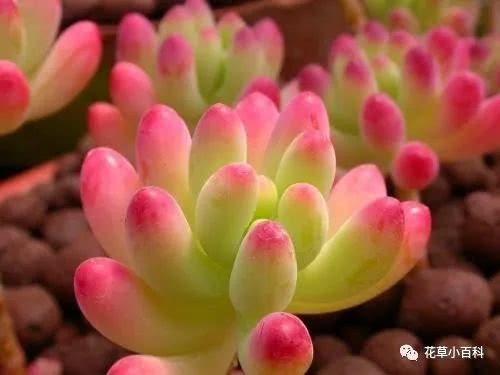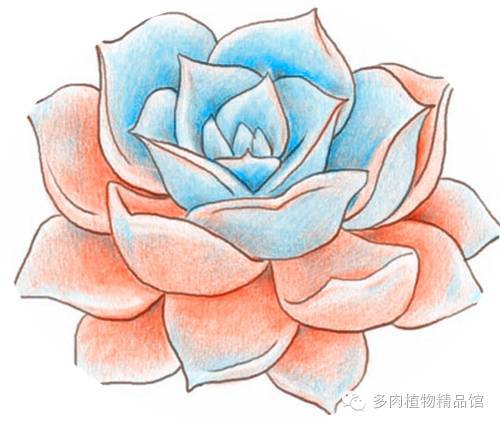fleshy soil

The soil of succulent plants is very important, many people think so, but there is not necessarily only one kind of soil suitable for succulent plants. Now the mainstream soil is peat/coconut bran mixed granular soil, which is easy to use; secondly, it is sterile and free of insects; thirdly, it is loose and breathable and suitable for planting meat, so it has become the choice of most people.
Cape Town, South Africa, natural information is an example: its fertile soil; the peninsula blowing sea breeze, sufficient sunshine, cool climate. They vary due to differences in terrain and soil. In coastal areas, it is mostly sandy rock and eroded granite, and in lower areas it is surrounded by shale layers. On the contrary, the inland areas are dominated by shale parent soil and river sedimentary soil. The three most common types of soil are granitic lozenges, usually red to yellow and acidic, found on slopes and mountains in foothills. It has good physical properties and water retention, distributed in Oakleaf, Tukulu, Hutton, Clovelly. Tarb Mountain sandstone soil is relatively barren sandy soil with good water retention. Distribution: Fernwood, Longlands, Westleigh, Dundee. Shale young soil, usually brown, firm in texture, partly decomposed parent rock. Rich in nutrients, with good water retention. Distribution areas: Glenrosa, Swartland, Klapmuts, Estcourt.
At this critical moment in the study of original ecological soil conditions, please be sure to calm down and carefully analyze and ponder. Through repeated comparison and research, we found that the three soils mentioned in the above example have one thing in common, that is, rich in nutrients and good water retention. Yes, it is rich in nutrients and has good water retention. Well, after clarifying this key point, coupled with our previous understanding of the soil for the succulent plants of the Crassulaceae family, as long as we add these characteristics such as good permeability and slightly acidic soil microenvironment, we can simulate its original ecology.
The first weapon for growing succulent plants--decaying leaf soil
For me, who has more than 20 years of experience in flower cultivation, decaying soil is the first choice of good planting material. My home is located in the vast plains of southwest Shandong, large areas of poplar trees, in my hometown around a lot, so early on I can not help but play their idea. At first I went to the countryside to look for it and collect it; then I felt too tired and exhausted, so I began to control myself. The method is to ride a tricycle in autumn, take a rake to collect the leaves of poplar trees, and then stack them against the sunny wall of the hometown yard. When stacking, first put a layer of leaves, then put a layer of unsieved coal dust, so repeatedly stacked several layers, then pour a small amount of sewage, finally cover a layer of about 10 cm thick coal dust on the top, and then let go. After weathering, after the summer of the second year, most of these deposits can be decomposed, can be dug up at any time, further crushed and sieved before use.
Decay soil is a kind of natural nutrient soil formed by microbial decomposition and fermentation of plant branches and leaves in stacking. In this process of decomposing plant branches and leaves by various microorganisms, many advantages different from natural soil are formed, such as light and loose, porous, long-term use without hardening, nutrients easily absorbed by plants, rich in organic matter, humic acid and a small amount of vitamins, auxins, trace elements, etc. The moldy soil is naturally distributed widely, easy to collect and simple to stack. In my experience, this kind of moldy soil is used to preserve meat, and it is best not to mix it with ordinary pastoral loam soil. Because the rotting leaf soil is very breathable and water-retaining, once added to the pastoral soil, especially after the viscous heavy loam, it destroys its good permeability, and it is easy to rot when it is used to maintain the sedum.
The second weapon for growing succulent plants--coal dust
For the medium of planting succulent plants, coal dust is a common medium, which is my flower cultivation must choose, basically also generally accepted by flower friends. The advantages of coal dust: breathable and permeable, the use effect is not worse than blue stone, light stone or plant gold stone; contains a lot of trace elements, such as iron oxide, calcium oxide, magnesium oxide, etc.; contains a large number of burned stones, loess and other fleshy plant planting medium; reduced to almost zero cost of the medium, especially for those who plant a large number of fans, play a large number of filling advantages; after high temperature combustion, basically no residual bacteria. Therefore, after the mixture of coal dust and rotten leaf soil, it obviously belongs to strong combination, which increases the permeability, water retention and fertilizer retention of the soil.
I usually take the burned honeycomb cinder and put it in the basin to soak it in water, so that the latter process can be operated cleanly without the trouble of cinder dust flying. Roughly working procedure: first crush the cinder, conveniently pick up the unburned coal and throw it away; when the largest cinder particle is only 1 cm in size, you can start screening the particles in the basin with a sieve; then you can get large, medium and small three levels of plant material through screening. Reminder, coal dust particles as a plant material can be mixed with peat or rotten leaf soil and other media use, the next time the pot turned in the old soil of coal slag soaked in water for a few days can still be reused.
The third weapon for growing succulent plants--environmental enzymes
Eco-enzymes, a colloquial term for a brown liquid produced by anaerobic fermentation of kitchen waste mixed with sugar and water, are promoted on some home life and home gardening websites under the green label. The fermentation liquor produced is acidic and accompanied by a pungent aromatic odor. According to some popular websites, Dr. Antimony from Thailand has studied enzymes for more than 30 years and successfully developed an environmentally friendly enzyme (also known as Bint Enzyme), which is characterized by simple production process, readily available production materials, saving money, wide range of uses, and helping to reduce waste.
Enzyme (enzyme) is actually an old translation of enzyme. Enzymes are biological macromolecules with biocatalytic function, that is, biocatalysts, which can accelerate the speed of biochemical reactions, but do not change the direction of the reaction and products. That is, enzymes can be used to speed up biochemical reactions, but not the biochemical reactions themselves. Its production process does not use any chemical synthesis substances; in the brewing process, they can promote each other and form a complex and stable enzyme ecosystem with multiple functions, which can inhibit the activities of harmful microorganisms, especially pathogenic bacteria and spoilage bacteria. I use it on Crassulaceae meat conservation, mainly in combination with each watering, mixed with water in an appropriate amount, as an organic fertilizer and to improve the pH of water quality. It has been used for several months now, and there are no side effects from the effect point of view. It is trustworthy.
In short, I used the combination of "rotten leaf soil + coal dust + environmental enzymes" to simulate the original ecology of the succulent plants of Crassulaceae. This is also when I first entered the door of Jingtianke, between some kind of opportunity, inspired by some kind of gradual exploration out, the current operation effect is very satisfactory. But what will happen in the future? What will be the impact on this year's summer? What are the effects on adult plants and seedlings, respectively? These questions await my active efforts and exploration. I am determined to continue to work to gradually achieve and achieve the conservation goals of low input, high output and high efficiency.
- Prev

Will the black rot of the meat in the same basin be contagious?
Text: whether the network is for beauty, or the flowerpot is not enough, pot cultivation is a very common thing. Since there are many plants of meat raised together, we will naturally encounter the black rot and death of a certain tree in the pots.
- Next

The thing about succulent plants drying their roots: how long does it take to dry their roots?
A meat friend on the Internet showed me a picture of the meat that had just been trimmed and asked me how long I needed to dry the root. I looked at the picture of the root system and replied that I would put it in the pot after drying for one day, and then wait another day to water it. And then there was another one.
Related
- Wuhan Hospital Iron Tree Blooming Result Was Instantly Frightened by the Gardener Master
- Which variety of camellia is the most fragrant and best? Which one do you like best?
- What is the small blue coat, the breeding methods and matters needing attention of the succulent plant
- Dormancy time and maintenance management of succulent plants during dormancy
- Minas succulent how to raise, Minas succulent plant pictures
- What are the varieties of winter succulent plants
- How to raise succulent plants in twelve rolls? let's take a look at some experience of breeding twelve rolls.
- Attention should be paid to water control for succulent plants during dormant period (winter and summer)
- Watering experience of twelve rolls of succulent plants
- Techniques for fertilizing succulent plants. An article will let you know how to fertilize succulent plants.

